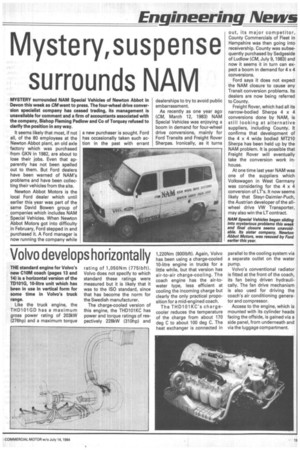Volvo develops horizontally
Page 21

If you've noticed an error in this article please click here to report it so we can fix it.
THE standard engine for Volvo's new C1OM coach (pages 13 and 14) is a horizontal version of the TD101G, 10-litre unit which has been in use in vertical form for some time in Volvo's truck range.
Like the truck engine, the THD101GD has a maximum gross power rating of 203kW (276hp) and a maximum torque rating of 1,050Nm (775Ibft). Volvo does not specify to which standard these ratings were measured but it is likely that it was to the ISO standard, since that has become the norm for the Swedish manufacturer.
The charge-cooled version of this engine, the THD101KC has power and torque ratings of respectively 228kW (310hp) and 1,220Nm (900Ibft). Again, Volvo has been using a charge-cooled 10-litre engine in trucks for a little while, but that version has air-to-air charge-cooling. The coach engine has the air-towater type, less efficient at cooling the incoming charge but clearly the only practical proposition for a mid-engined coach.
The THD1 01 KC's chargecooler reduces the temperature of the charge from about 170 deg C to about 100 deg C. The heat exchanger is connected in parallel to the cooling system via a separate outlet on the water pump.
Volvo's conventional radiator is fitted at the front of the coach, its fan being driven hydraulically. The fan drive mechanism is also used for driving the coach's air conditioning generator and compressor.
Access to the engine, which is mounted with its cylinder heads facing the offside, is gained via a side panel, from underneath and via the luggage compartment.
























































































